“Blessed is the nation that doesn’t need heroes" Goethe. “Hero-worship is strongest where there is least regard for human freedom.” Herbert Spencer
Search This Blog
Thursday 17 March 2022
Sunday 13 February 2022
Saturday 12 February 2022
Muslim women must see burqa is just like chastity belt of dark ages, Taslima Nasreen writes
Taslima Nasreen in The Print
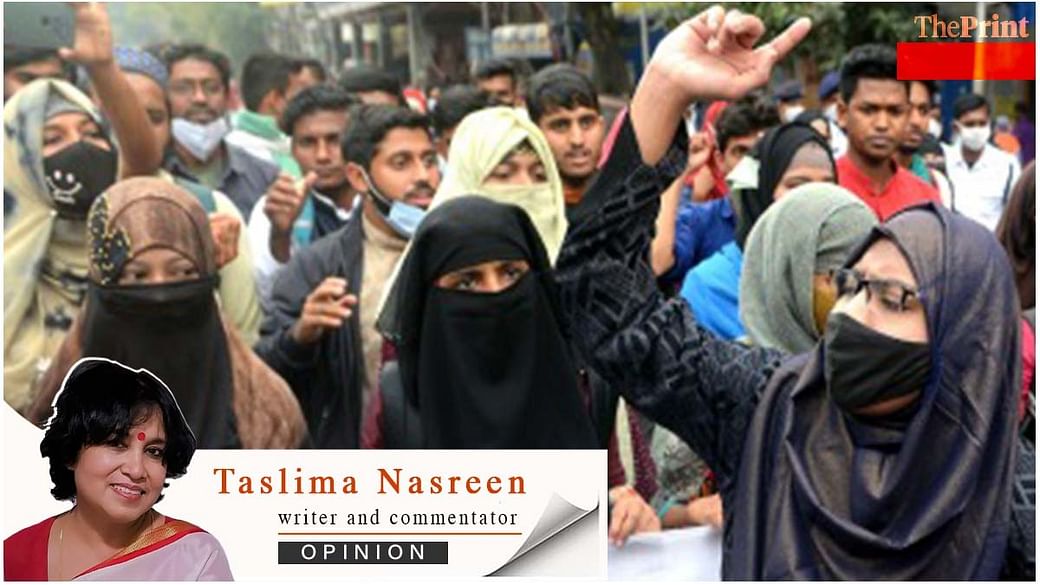
There is practically no difference between a Jewish, Christian, Muslim or Hindu fundamentalist. They are all primarily ‘intolerant’. Standing next to the mortal remains of playback singer Lata Mangeshkar, Muslims have prayed to Allah, Hindus to Bhagwan, and Christians to their almighty God. Seeing Bollywood icon Shah Rukh Khan lifting his hands in prayer and blowing on her body, some Hindu extremists thought that he was spitting. Then social media mayhem descended.
I have noticed that in India, while Muslims are largely aware of Hindu rituals and practices, most Hindus are ignorant about Muslims ones. Similarly in Bangladesh, Hindus understand Muslim rituals more than what Muslims know of Hindus.
To a large extent, intolerance stems from ignorance. As we saw in the Shah Rukh Khan incident, people from all religions stood behind him. In fact, there are enough liberal and rational people in the Hindu community to oppose the extremists.
The row over hijab
An unnecessary controversy over hijab has erupted in another part of the country, Karnataka. After authorities raised objection to female students from wearing hijab to colleges, the protest by Muslim students started. Then, a group of students donning saffron scarves, took to the streets protesting against the burqa. Chief Minister Basavaraj Bommai ordered schools and colleges to remain shut for a few days. But this is not a solution. If the state fears riots, then violence can erupt when schools and colleges reopen. To prevent riots, the mindset needs to change, and hatred and fear for each other need to be washed clean. In this regard, the Karnataka High Court’s interim order makes sense. I believe, uniform civil code and uniform dress code are necessary to stop conflicts. Right to religion is not above the right to education.
The distance between Hindus and Muslims has not been bridged even after 75 years of Partition. Pakistan has separated from India and has turned into a religious state. But India never wanted to become a Pakistan. Or it could have easily turned into a Hindu State 75 years ago. The Indian Constitution upholds secularism, not religion. This country, with a majority Hindu population, is home to the second largest Muslim population in the world. The laws of India give equal rights to people from all religions, castes, languages, creeds, and cultures.
It is perfectly all right for an educational institution in a secular country to mandate secular dress codes for its students. There is nothing wrong in such a message from the school/college authority that states that religion is to be practised within the confines of the home. Educational institutions, meant for fostering knowledge, are not influenced by religion or gender. It is education that can lift people from the abyss of bigotry, baseness, conservativeness and superstitions into a world where the principles of individual freedom, free-thinking, humanism and rationality based on science is valued highly.
In that world, women do not feel pride in their shackles of subjugation but rather break free from them, they do not perceive covering themselves in a burqa as a matter of right but as a symbol of female persecution and cast them away. Burqas, niqabs, hijabs have a singular aim of commodifying women as sex objects. The fact that women need to hide themselves from men who sexually salivate at the sight of women is not an honourable thought for both women and men.
Education is supreme
Twelve years ago, a local newspaper in Karnataka published an article of mine on burqa. Some Muslim fundamentalists vandalised the office and burnt it down. They also burnt down shops and businesses around it. Hindus also hit the streets in protest. Two people died when the police opened fire. A simple burqa can still cause fire to burn in this state. Riots can still break out over burqas.
A burqa and hijab can never be a woman’s choice. They have to be worn only when choices are taken away. Just like political Islam, burqa/hijab is also political today. Members of the family force the woman to wear the burqa/hijab. It is a result of sustained brainwashing from a tender age. Religious apparel like the burqa/hijab can never be a person’s identity, which is created by capabilities and accomplishments. Iran made hijab compulsory for women. Women stood on the streets and threw away their hijabs in protest. The women of Karnataka, who still consider hijab as their identity, need to strive harder to find a more meaningful and respectable identity for themselves.
When a woman’s right to education is violated on the pretext of her wearing a hijab, when someone forces a woman out of hijab as a precondition to education, I stand in favour of education even in hijab. At the same time, when a woman is forced to wear a hijab, I stand in favour of throwing the hijab away. Personally I am against hijab and burqa. I believe it is a patriarchal conspiracy that forces women into wearing burqa. These pieces of clothing are symbols of oppression and insult to women. I hope women soon realise that burqa is not different from the chastity belt of the dark ages that was used to lock in women’s sexual organs. If chastity belts are humiliating, why not burqa?
Some say that the furore over the burqa in Karnataka is not spontaneous and is supported by political forces. This sounds very familiar to saying that riots do not happen, but are manufactured — mostly before elections and almost always between Hindus and Muslims. Apparently they do count for a few votes. I, too, was thrown out of West Bengal for a few votes.
It is heartening that riots do not happen. It would be frightening if they did happen spontaneously. Then we would have surmised that Hindus and Muslims are born enemies and can never live with each other peacefully.
I believe that even the Partition riots didn’t happen on their own but were made to happen.
A new India
I have heard some Hindu fanatics call for India to be turned into a Hindu Rashtra, where non-Hindus will be converted to Hinduism or be forced to leave the country.
I really do not know if such people are big in numbers. I know India as a secular state and love it that way. I have confidence in the country. Is India changing? Will it change? I am aware of the liberality of Hinduism as a religion. One is free to follow or not follow it. Unlike in Islam, Hinduism does not force one to follow its practices. Hinduism doesn’t prescribe people to torture, imprison, behead, hack or hang someone to death for blasphemy. Superstitions still exist in Hinduism, even though a lot has waned with time. But, India will be a country only for Hindus, anyone criticising Hindus or Hindutva will be killed — are statements that are new to me.
I have been critically scrutinising all religions and religious fundamentalism in order to uphold women’s rights and equality for more than three decades now. My writings on Hinduism and religious superstitions suppressing women’s rights have been published in Indian newspapers/magazines and have also been appreciated. But today, as soon as I pose a question like, “Why do men not observe Karva Chauth for the welfare of women?” hundreds of Hindus hurl personal attacks and abuse on me demanding my expulsion from the country. This is a new India. An India that I cannot imagine. I find their behaviour similar to Muslim fundamentalists. Utterly intolerant.
If India was a Hindu Rashtra, will all fundamentalists and liberal Hindus be able to live peacefully? Will there be no discontent among the dominant and oppressed castes, no discrimination between men and women? A state only for Hindus? Perhaps. Just the way Jews have carved a state for themselves, and Muslims have Pakistan.
I will have to leave a Hindu Rashtra too because I cannot become a Hindu. I am an atheist and a humanist, and I choose to stay that way. Gauri Lankesh, I believe, was a humanist. She was not fit for a Hindu Rashtra, nor will I be.
Friday 11 February 2022
"The Inside Story on The Hijab - School case"
Anusha Ravi Sood in The Print
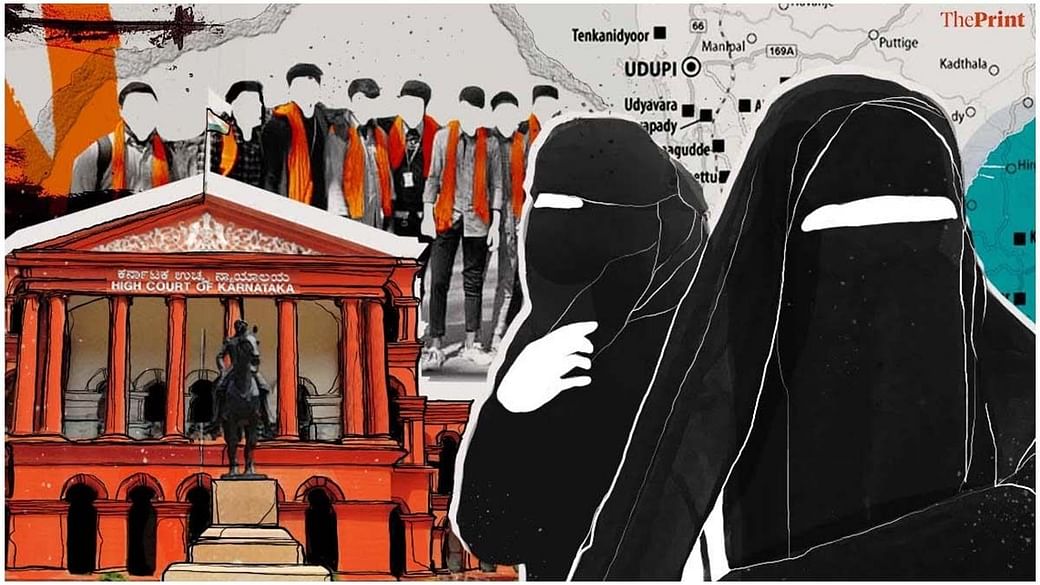
Udupi: Abdul Shukur took a sip of water and bit into a chikki (peanut bar) at 6:30pm Tuesday. It was his first meal after a day-long fast and he had come to offer prayers at the Jamia Masjid in Udupi, Karnataka. Shukur’s daughter, Muskaan Zainab, studies at the city’s Government Pre-University (PU) College and is one of several students who have petitioned the Karnataka High Court for the right to wear the hijab (headscarf) on campus.
“Our entire family fasted today since our petition was being heard in court. I will fast tomorrow too,” 46-year old Shukur, who runs a small business in Malpe, said.
The hijab row has been making headlines since January, but Shukur claimed the issue was triggered in October when viral photos showed Muslim girls at a protest organised by the Akhil Bharatiya Vidyarthi Parishad (ABVP, the RSS-affiliated students’ body).
The images in question were posted on the Facebook page of the Udupi ABVP on 30 October last year. They showed Muslim girls holding the ABVP flag as part of a protest demanding a probe into the alleged rape of a Manipal student. In the communally sensitive coastal belt of Karnataka, the pictures ignited a controversy.
“I was taken aback to see my daughter there… because she isn’t a member of ABVP,” Shukur said. Furthermore, Muskaan was not wearing her usual headscarf in the photo.
“I asked her why she wasn’t wearing a headscarf in the photo, and that is when she told me that the college doesn’t allow hijabs in classrooms,” he said. This came as a shock to Shukur, who decided to confront the college principal.
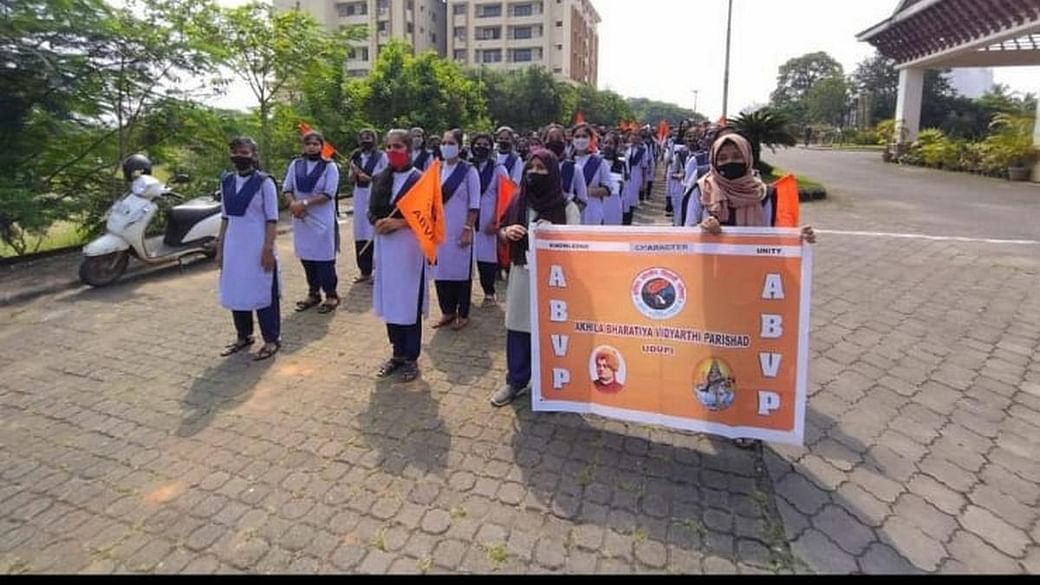
He was not the only one taking notice. According to an intel report submitted by the Udupi police to the state government, the Campus Front of India (CFI), which is the students’ wing of the Islamist outfit Popular Front of India (PFI), had approached parents with the offer to help take on the college management.
A source from the CFI who did not wish to be named told ThePrint that the ABVP protest incident had outraged the organisation. It therefore started encouraging Muslim women to refuse to join ABVP events and to fight for their right to wear hijabs in the classroom. The women’s parents also took these demands to the college.
“When I asked the principal why students were being sent to protest without consent and were not allowed to wear headscarves, he said it was a small issue,” Shukur said.
Rudre Gowda, principal of the college, rejected this allegation. “For years, students have been wearing hijabs to campus, but have been removing them during classes. These girls too were adhering to this, but since December, they started demanding that hijab should be allowed during classes too,” Gowda told ThePrint.
The matter quickly led to a standoff between the families of six Muslim students and the college management. The CFI also alleged that the college had, as retaliation, made details of the girls and their families public.
While there were attempts to negotiate an understanding between the students and the college authorities in Udupi, the row escalated rapidly — partly due to political organisations jumping on to the bandwagon and partly due to the wildfire effect of social media.
In January, the students petitioned the Karnataka High Court, by which time the issue was making headlines and had snowballed into communally charged conflicts in several Karnataka colleges.
Also Read: A timeline of how hijab row took centre stage in Karnataka politics and reached HC
Bruised egos and social media hype

Before the hijab issue reached the headlines, there were weeks of efforts to forge an understanding between the families and the college.
A senior leader of the Udupi District Muslim Okkoota — an umbrella organisation of mosques, jamaats, and Islamic organisations in Udupi — told ThePrint on the condition of anonymity that the body had tried its best to convince the families that it was acceptable to remove the hijab in class.
“We advised the girls to not make a big issue out of not wearing hijab inside classrooms. We even took them and their parents to religious clerics and explained that it was okay to remove hijabs in the classroom,” he said.
However, the students were “adamant”, he said, because they had received backing from the CFI, the campus affiliate of the PFI, an Islamist outfit that was set up in Kerala in 2006 and which the Bharatiya Janata Party (BJP) wants banned because of its allegedly radical tendencies.
“The CFI saw [the hijab conflict] as an opportunity to strengthen its support base,” the Muslim Okkoota leader said. In coastal Karnataka, he explained, the two main students’ bodies are the ABVP and CFI, while the Congress’s campus body, the National Students Union of India (NSUI), does not have a presence in local colleges.
When ThePrint spoke to CFI members in Udupi, they claimed that the organisation got involved only after students of the PU College approached them on 27 December, after their memorandums to the district commissioner and education department officials did not yield results. The students in question also told ThePrint that they were not members of the CFI. However, at least three parents are members of the PFI’s political wing, the Social Democratic Party of India (SDPI).
By the end of December, though, nobody was in the mood for a compromise, according to the Muslim Okkoota leader. He said that the Muslim women’s protest, and the social media traction it got, riled the College Development Committee (CDC), which is empowered by the government to take administrative decisions for public educational institutions.
“In December and January, the students’ protests started getting attention on social media and the press. They were shown standing outside the classroom and making notes since they were not allowed inside. This hurt the egos of the committee members,” he claimed, adding that the senior-most members of this body were members of the BJP and RSS. None of the 21 members in the CDC are from the Muslim community.
The matter had now become a “prestige issue” with the BJP and other Hindutva organisations on one side, and the PFI and its affiliates on the other, the Muslim Okkoota leader said.
BJP vs. PFI
What both Hindutva and Muslim organisations can agree on is that as videos from Udupi went viral, they sparked protests in other districts too. Throughout January and February, Karnataka saw several face-offs in colleges between some students in hijabs and others wielding saffron scarves. Each side holds the other responsible.
BJP leaders maintain that without “instigation” from the PFI, the protests wouldn’t have reached such a magnitude.
“Within two days of the girls’ protest in January outside their classrooms, thousands of social media posts were released. How is that possible without a pre-planned, strategised effort?” V. Sunil Kumar, Minister for Energy and Kannada & Culture, told ThePrint.
“When [Muslim students] started escalating the matter, naturally, students from the Hindu community retaliated — a matter of action and reaction,” Kumar, who is also the MLA from Karkala in Udupi district, added.

Other BJP ministers in the Basavaraj Bommai cabinet have also made similar allegations against the PFI. “Students are being instigated to protest for hijab. The role of the PFI and its student wing CFI will be probed thoroughly,” B.C. Nagesh, Karnataka Minister of Primary & Secondary Education, told reporters Tuesday.
The PFI has denied such allegations and has attempted to distance itself from the row.
“As an organisation, we are working for upliftment of marginalised communities. We are in no way involved in this row. Our student wing (CFI) is only trying to provide moral support to aggrieved students. Communal flareups only benefit the BJP,” Anis Ahmed, national general secretary of the PFI, told ThePrint.
The CFI has acknowledged that it was helping the Muslim women’s agitation in Udupi’s PU College, but denied having any political motives.
“We are a student organisation. We do not have any links with political parties. We are leading the students who are fighting for their rights. Muslim students have been harassed at that institute for years now. This is not a retort that erupted overnight,” Masood Manna, a committee member of CFI Udupi, told ThePrint.
Also Read: The right answer to the wrong hijab question is still a wrong answer
Why the PFI and its affiliates are so controversial
The PFI is the organisational successor of the Kerala-based National Development Front (NDF) and claims to fight for social justice for Muslims, particularly in the southern states of Kerala, Karnataka, and Tamil Nadu.
In 2010, the political wing of the PFI — the Social Democratic Party of India (SDPI) — was registered with the Election Commission. Since then, it has slowly been making inroads in the coastal Karnataka belt. It had one of its biggest triumphs in the December 2021 elections to 58 Urban Local Bodies (ULBs) in Karnataka, when it won six seats.
The CFI, meanwhile, is popular among Muslim students in three districts of coastal Karnataka — Udupi, Dakshin Kannada and Uttar Kannada. The CFI has actively eaten into the popularity of the Congress’s student wing, the NSUI, in the three districts.
However, the PFI has faced allegations of radicalism from the BJP. In April last year, the Union government told the Supreme Court that it was in the process of banning the PFI, claiming that many office-bearers had links with the now banned Student Islamic Movement of India (SIMI). Chargesheets have also been filed against members of PFI over their alleged involvement in various instances of unrest, which the organisation has dismisses as “baseless”.
Notably, some Muslim community leaders also have reservations about the PFI and its branches. The senior Muslim Okkoota leader who was quoted earlier alleged that the hijab protests seemed to be a ploy by the organisation’s political wing to mobilise support.
“All the Muslim girls use the same vocabulary… ‘fundamental rights’, ‘constitutional issue’, ‘hijab is intrinsic to Islam’. While they may have been wearing hijab for years, the words and phrases that are being publicly said are coming from one source,” the Muslim Okkuta leader claimed.
Allegations of “instigation”, however, have also been levelled against Hindutva organisations, which have started a counter-agitation involving saffron shawls and scarves, and an influx into colleges of ‘protesters’ who are not even students.
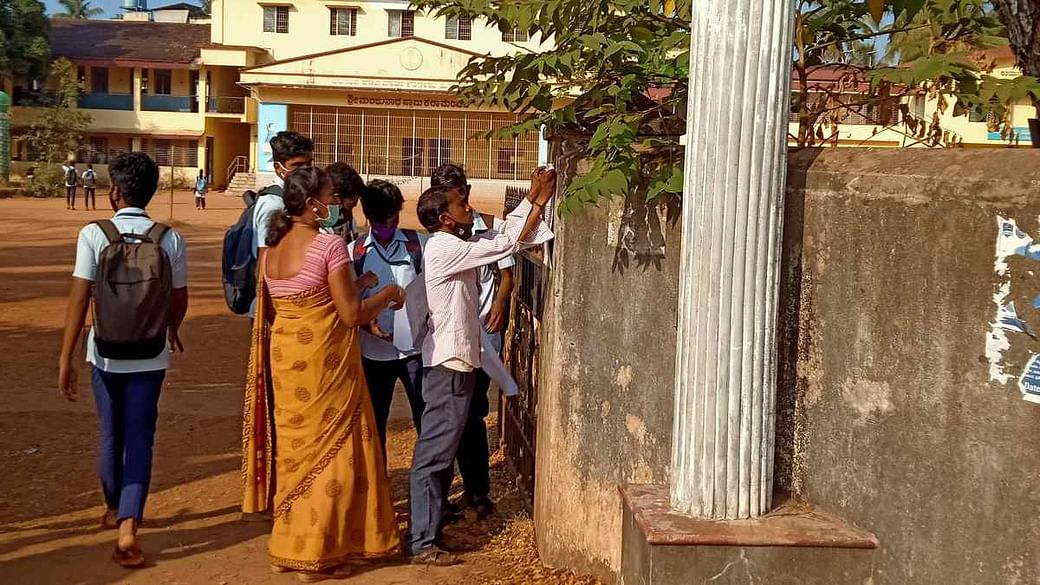
Doubling down on the hijab
“Perhaps one or two Muslim girls used to wear hijab to college but now the number has drastically increased. They are doing this to assert their religious identity,” Halady Srinivas Poojari, MLA for Kundapur, told ThePrint. He isn’t far off the mark, although there are varying interpretations of why exactly the women are doing so.
According to Abdul Aziz Udyavar, organising secretary of the Udupi District Muslim Okkoota, the fight over the right to wear the hijab has inspired other girls from the community to exercise their constitutionally guaranteed freedoms. “Just because I was not exercising my right before doesn’t mean I shouldn’t do it in the future,” Udyavar said.
Principals of at least three colleges in Kundapur told ThePrint that while some Muslim students had always worn the hijab to classes, the number had increased ever since the row took off in January.
“There is no explicit rule that bans hijab in the college, but there is no rule that permits it either,” Naveen Shetty, principal of R.N. Shetty College, said.
According to him, students who sought permission to wear hijabs earlier could usually do so “as long as it doesn’t cause trouble”. Now, Shetty said, it was causing trouble and so hijabs as well as saffron scarves were banned in the college. “The management decided to ban both explicitly until the time the high court order comes,” Shetty added.
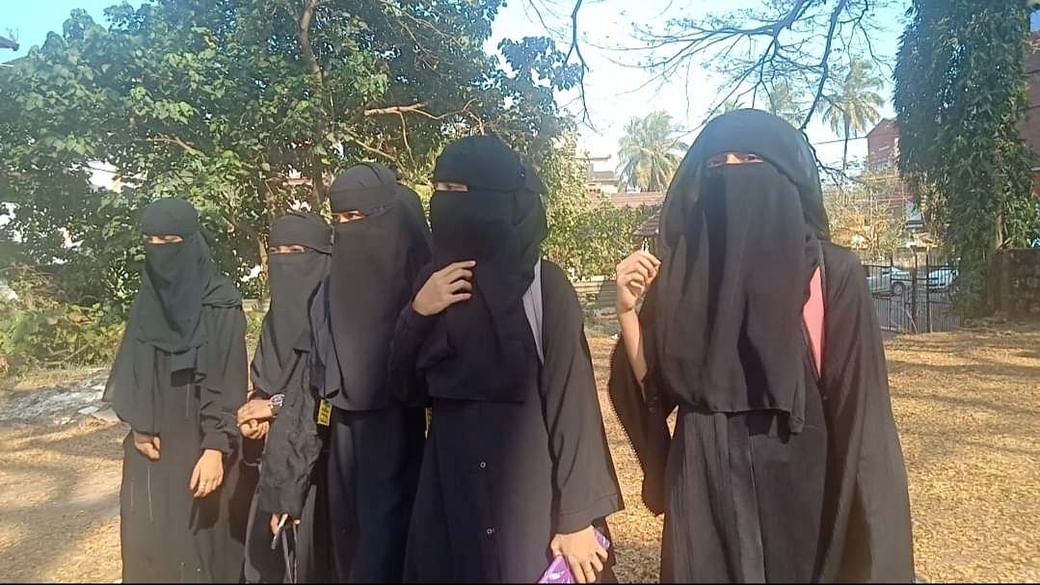
The Udupi PU College students who petitioned the court told ThePrint that they shouldn’t have to choose between their education and wearing a hijab, but said their stance has come at a cost to them.
Abdul Shukur, Muskaan’s father, said he was concerned for the family’s safety. Another student, A.H. Almas, told ThePrint about the hostility that she was encountering.
“When we started protesting, our details were leaked and unknown people follow us around,” she alleged, adding that members of the CFI were giving the women protection.
The Muslim Okkoota had until recently refrained from openly backing the hijab cause but has now reconsidered its decision. “When Muslim girls who are studying at co-ed colleges that have allowed hijab for years started getting targeted, we had to step in since it is injustice being meted out to them,” Ibrahim Sahib Kota, president of the Udupi Muslim Okkoota, said.
‘Senior VHP, Bajrang Dal, Hindu Jagaran Vedike leaders oversee saffron scarf distribution’
When ThePrint visited Mahatma Gandhi Memorial (MGM) College in Udupi, students wearing hijabs were engaged in a face-off with others who had donned saffron scarves and headgear. But, when ThePrint spoke to many of the Hindu protestors, they admitted they were no longer students of the college.
“I studied commerce here and passed out in the 2016-2017 academic year,” Sushanth sheepishly told ThePrint, identifying himself as an ABVP member. “For many years, [Muslim women students] have been wearing hijabs in classrooms but now since they are making a strong assertion of their religious right, should we not as Hindus assert our religious identity too?” he asked, insisting that the protesting Hindu students had all brought their own saffron scarves and shawls.
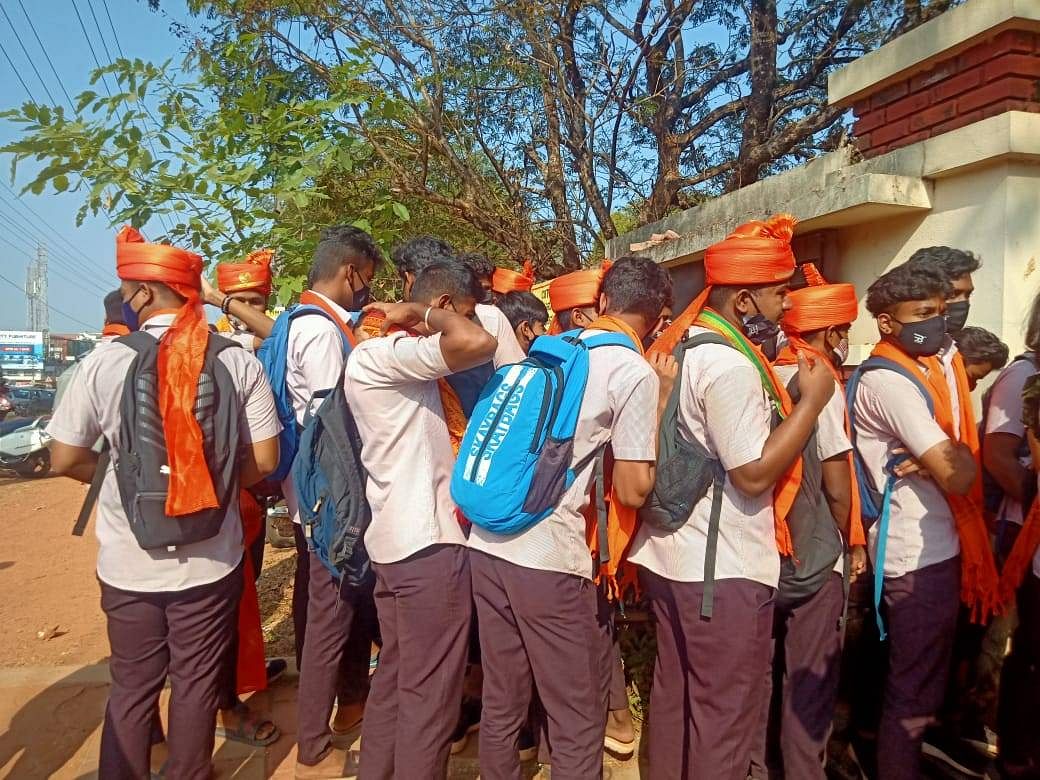
ThePrint, however, witnessed male protestors distributing saffron shawls to women students who had just arrived at the college. The scene was in line with a couple of videos that went viral this month: One showed students returning their saffron headgear to purported members of the Hindu Jagaran Vedike near their college, and another showed someone in an Innova car distributing saffron scarves to students at a college in Kodagu.
Another protestor, Akshat Pai, said he had graduated from the college in 2014, but was there in his capacity as a Hindu Jagaran Vedike leader. “We haven’t pressured the students into protesting. They are doing it on their own,” Akshat Pai said, as students in saffron accessories hovered around him and asked whether they should leave or stay.
A first-year B.Com. student, a Hindu woman, told ThePrint on the condition of anonymity that many of the protestors did not study at the college. “Why are outsiders coming and supplying saffron scarves to our collegemates?” she asked, adding that she had no problem with the hijab just as her Muslim friends had no objection to the bindi on her forehead.
Harshita, another Hindu student at MGM college, had a different viewpoint. She cited a 5 February government order proscribing clothes that “disturb public law and order” and said that if Muslim women could wear hijabs, Hindus could wear saffron scarves.
Prakash Kukkehalli, Mangaluru unit general secretary of the Hindu Jagaran Vedike, was observing the protest at MGM college from the other side of the road, with young men from the campus occasionally arriving to consult with him.
“We are not instigating students. We are only giving them moral support,” Kukkehalli told ThePrint.
According to him, the PFI, SDPI, and other Muslim organisations were provoking students for political benefit. “They have launched social media warfare to dent the image of India,” he said. “Today they will ask for hijab, tomorrow it will be Sharia law… a separate nation.”
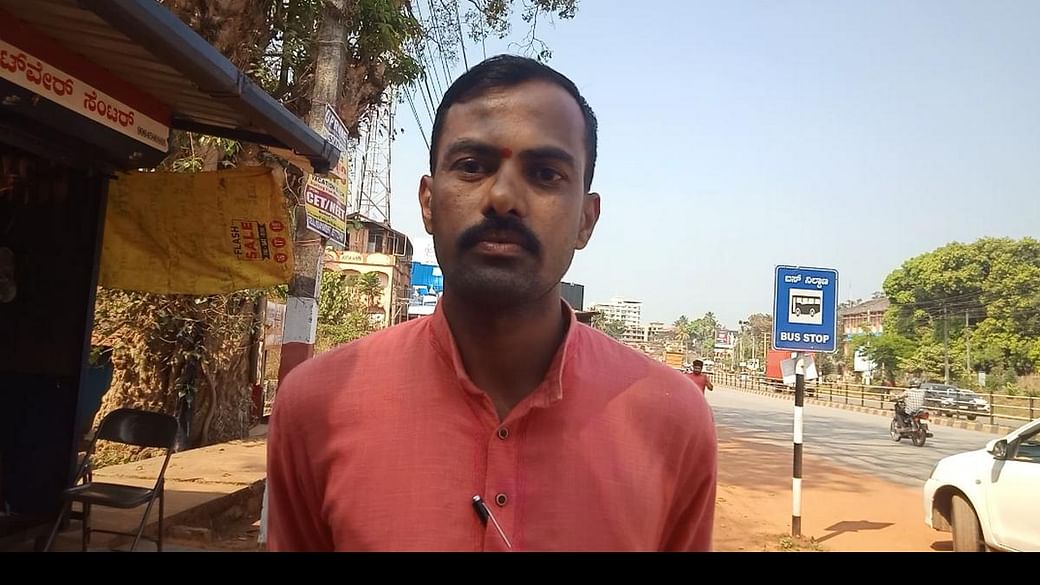
A former ABVP office-bearer, who did not want to be named, told ThePrint how the saffron scarf protest is orchestrated by Hindutva organisations.
“The saffron scarves are procured and distributed by office bearers. Senior leaders of the VHP, Bajrang Dal, Hindu Jagarana Vedike even visit protest sites to observe whom to groom as a leader and if anyone is straying away from discussed slogans or statements,” he said.
This former ABVP leader added that he did not believe in this kind of “communal activism”, whether from Hindus or Muslims, since it only harmed students’ prospects.
“Student activists should be fighting for better colleges, professional courses and employment — not this hijab or saffron scarf fight,” he said.
A deputy superintendent-rank police officer from Udupi told ThePrint that the police were aware of saffron scarves being handed out to students, but that this was not a crime. “Just before students arrive at their colleges, saffron scarves are being handed to them but that is not an offence,” the police officer said.
Over the past few days, though, the protests have taken a more violent turn. The police arrested 15 people in Shivamogga and Bagalkot districts Tuesday. Last week, police in Kundapur, Udupi, arrested two people, Abdul Majeed and Rajab, who were carrying knives near Kundapur Government PU College.
Communally sensitive belt of Karnataka
The three districts of coastal Karnataka — Dakshin Kannada, Uttar Kannada, and Udupi —are often counted among the more communally sensitive regions in India. All three districts have a sizeable population of Muslims as well as Christians.
“There are at least a hundred communal violence incidents in Udupi and Dakshin Kannada alone annually,” Suresh Bhat Bakrabail, an activist of the Karnataka Communal Harmony Forum (which keeps a track of communal violence incidents in coastal Karnataka) told ThePrint. In 2021, in a four-year high, there were more than 120 such incidents in these two districts alone.
Social activists attribute the frequent communal flare-ups in the region, which is frequently described as a “Hindutva laboratory“, largely to incitement from radical Hindu and Muslim organisations.
Friday 4 February 2022
Thursday 13 January 2022
Friday 7 January 2022
Wednesday 5 January 2022
Sunday 17 October 2021
Thursday 23 September 2021
Monday 13 September 2021
Wednesday 8 September 2021
Monday 30 August 2021
Wednesday 11 August 2021
Saturday 17 April 2021
The Straw Man and The Great Indian Kitchen
By Girish Menon
In the introduction to his book ‘How to win every argument’ Madsen Pirie writes:
Sound reasoning is the basis of winning an argument. Logical fallacies undermine arguments…Many of the fallacies are committed by people genuinely ignorant of logical reasoning, the nature of evidence or what counts as relevant material. Others however might be committed by persons bent on deception. If there is insufficient force behind the argument and the evidence, fallacies can add enough weight to carry them through.
The Malayalam film The Great Indian Kitchen is one such exercise in fallacious reasoning. The film maker sets up and destroys a Straw Man in the form of some highly conservative Sabarimala devotees who are male, upper caste and Hindu. In such households, the film argues, the women are perennially confined to the kitchen and subject to male whims. Some women have bought into the system while the female protagonist and her mother-in-law take up the feminist cause of subversion and rebellion.
A Straw Man, Pirie writes, is a misrepresentation of your opponent’s position, created by you for the express purpose of being knocked down. This is usually done by over-stating an opponent’s position. If your opponent will not make himself an extremist, you can oblige with a Straw Man.
The Straw Man is fallacious because he says nothing about the real argument. Its function is to elicit, by the ease of his demolition, a scorn which can be directed at the real figure he represents.
This writer carried out a straw poll (not representative at all!) among those who supported the filmmaker’s thesis and not one of them stated that they were aware of such instances happening to people known to them. Instead, most of them pointed their fingers to North Kerala where apparently such practices are rife. I did ask a former resident of North Kerala if such things happened there and his response was that ‘Women everywhere were the same North or any part of Kerala’.
Some feminists I know took up cudgels on behalf of the female protagonist even though their own life experiences did not match the film’s heroine. They quoted some sisters who were treated badly by their husbands, but added that these husbands also wanted to live of their wife's earnings. However, they were not willing to question the failure of the female protagonist, who is depicted as educated and modern, to carry out due diligence before entering into the marital contract.
In this writer’s view, the creation and destruction of the Straw Man is the only protest available to progressives and feminists. Because, despite the Supreme Court’s progressive decision in the Sabarimala case, even the progressive left government has declared its inability to implement reforms to Sabarimala rituals. This is because the majority opinion which includes many Hindu women want to maintain the status quo and are unconvinced by the feminist rhetoric.
Sunday 11 April 2021
Tuesday 6 April 2021
On Gujarat's Love Jihad Bill
Friday 2 April 2021
Monday 29 March 2021
Thursday 18 March 2021
The Benefits Of Being Hindu
Kerala actor Joy Mathew has kicked up a debate on social media about the differences between Hinduism and Abrahamic religions. The post has gone viral since then.
“Benefits of being Hindu- No need to go and learn religion in childhood. No restrictions about what to do or what not to do. No hard and fast rules about how to live your life,” began the Facebook post of Mathew, who is known as a ‘political actor’ in Kerala.
Mathew, however, has confessed that it is not a post written by him. “One of my friends sent this to me on WhatsApp. I am posting it here for my readers since I find elements of truth in it,” he said, adding, “I am not a slave to any religion."
The one-liners in his post say, in Hinduism, "there is no need to wear a cap, no need of circumcision, no baptism."
“There is no compulsion to go to temples. Only believers have to go. If you wish to go, you can go to any temple irrespective of the caste, language or the ritualistic traditions.
You won’t be labeled agnostic. You won’t be excommunicated.
At the time of marriage, you won’t need a character certificate from the priests. Bride’s family won’t go to the temples to check if you practise religion.”
You can live your life peacefully with only one or two children as you like.
Since there is no restriction to drink, you don’t need to spoil your life by getting addict to weed and drugs.
You can watch films. You can dance. You can sing. You can give and take money for interest.
You can live your life as you like. There are no doctrines.
There are no scary stories about the life after death.
You don’t need to spoil your life dreaming about rivers of wine and houries in heaven.
You don’t need to fear about becoming the firewood in the hell.
There is nothing that goes against the modern science.
There are no special rules for women. No one will abuse if a woman dances. Instead, they will clap and encourage. They will even send girls for dance classes. And for sports too. You don’t need to cover your face, nor head. You can wear the dresses of your choice. Women can eat along with men.
You can worship any god of any religion. You can light stars. You can make cribs. You can celebrate any festival. You can wish your friends on any festival.
Also, you can share this post without fear” he concludes.